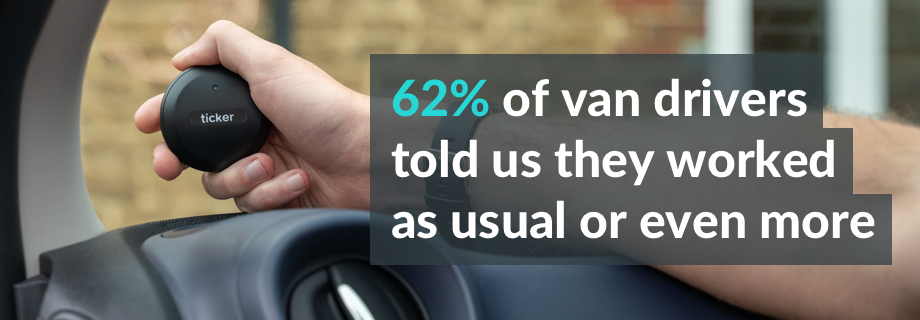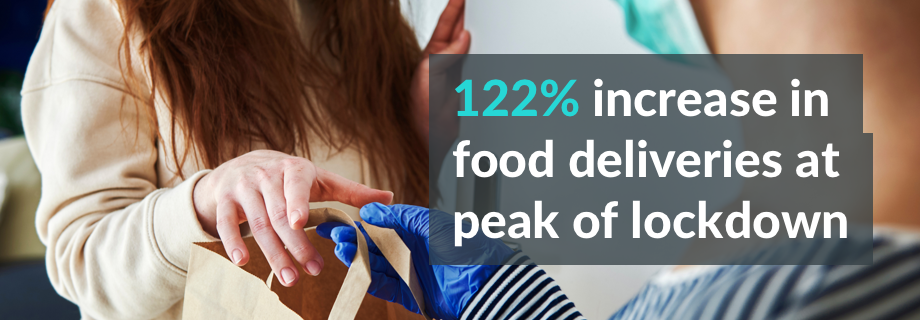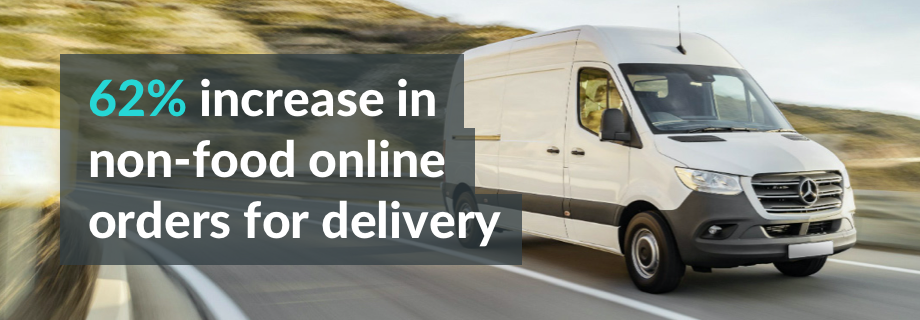Rise of the van driver
Van drivers have been the quiet backbone of life in the UK for years. Online shopping and food delivery have caused a huge spike in the number of van drivers on the road – a 30% increase over the last decade – and it’s showing no sign of stopping.
While many of us hid from COVID-19 and took to ordering everything to our doorstep, the UK’s 272,600 van drivers (and counting) kept calm and carried on.
How lockdown affected van driving
Many retailers struggled to meet demand for delivery in the early months of lockdown. As a result, Tesco hired 3,000 extra van drivers and DPD took on 6,000.
With so many people furloughed or made redundant, delivery driving was an easily adopted new line of work. A lifeline for both driver and customer.
No home working for the nation’s van drivers
A McKinsey study found that 50% of the UK workforce was still working during lockdown. However, many of those still working were doing so from home.
When we recently asked van drivers about their lockdown experience, 62% told us they kept working as usual or worked even more.
Van drivers fell into the odd grey area of essential – but non-emergency – workers. Delivering much-needed supplies, repairing plumbing, recovering breakdowns and generally keeping the country functioning.

Van production and prices are rising
At another point in the chain, van manufacturers have stepped up production. The Sunday Times reported on 6 September that the Vauxhall factory in Luton was adding an extra shift to keep up with demand for new vans.
But an unfortunate side effect of the country’s need for van drivers is rising costs for vans themselves. Secondhand van sales have seen a surge, and with that, prices are up too.
In June, one auction house reported dealers paying prices between 30% and 40% higher than pre-COVID.
“When you see a three-year-old Ford Transit with 50,000 miles on the clock booking at £9,100 and selling for £13,500 you know we are in a market that is extraordinary.”Alex Wright, Managing Director at SVA
What about van insurance?
Pre-lockdown, van insurance prices were already on the rise. At least, that was the case for traditional ways of insuring.
We designed Ticker van insurance with a box to combat those high premiums. People who drive well deserve lower prices: if you’re less risk on the road, we want to reward you.
“We know people who drive for their livelihood are often great drivers. Box insurance is still quite new for this group, but as van drivers are facing rising costs across the board, it makes sense to give a box a go and see if you can save.”Find out how Ticker van insurance worksRichard King, Ticker founder and CEO

